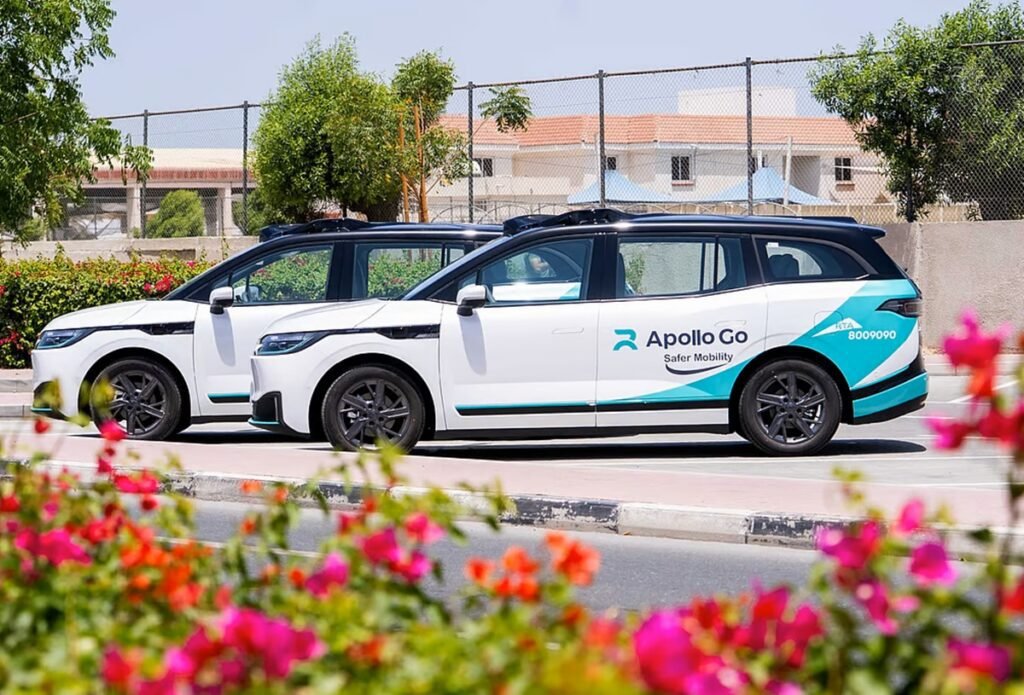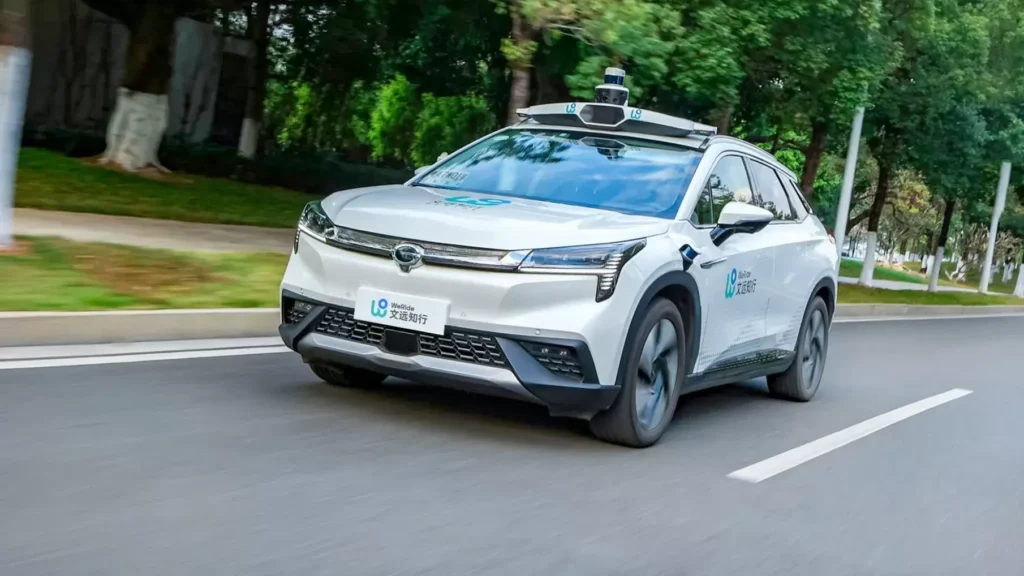Dubai is once again redefining what the future of transportation looks like. In a groundbreaking initiative, the city has announced the launch of self-driving taxi trials set to begin in 2025. This is not just about technology — it’s about reshaping how people move through one of the world’s most dynamic cities.
The pilot program will serve as a major step forward in Dubai’s ambitious vision to transform itself into a hub for autonomous transportation. And with plans already in motion, it’s only a matter of time before robotic taxis become a part of daily life in the emirate.
The Beginning of a New Mobility Era
The trials mark a pivotal moment in Dubai’s journey toward becoming a global smart city. For years, Dubai has invested heavily in future mobility, clean energy, and automation. The introduction of self-driving taxis represents the perfect convergence of these ambitions.

But this initiative isn’t about flashy headlines. It’s designed with purpose — to reduce traffic congestion, cut carbon emissions, and improve road safety, all while offering seamless, comfortable transport options to residents and tourists alike.
What Will the Trials Look Like?
Starting in 2025, a select number of autonomous vehicles will begin operating across pre-mapped areas of Dubai. These taxis will be equipped with advanced sensors, high-definition cameras, and AI-powered navigation systems. In the initial phases, safety drivers will be onboard to monitor and intervene if needed — a common practice in pilot programs worldwide.
The vehicles will be available through a ride-hailing app, providing users with the convenience they’ve come to expect from modern transport services. These will operate just like traditional taxis, but with no one behind the wheel — only a combination of real-time data, cloud connectivity, and AI decision-making guiding each trip.
A Bold Vision for 2030
Dubai’s government has long championed innovation in public transportation. By 2030, the city aims for 25% of all trips to be conducted via autonomous vehicles. The self-driving taxi trials in 2025 are a key stepping stone toward realizing this bold target.
This vision is backed by a comprehensive strategy involving infrastructure upgrades, legislation updates, and private sector collaboration. From traffic management to vehicle regulation and digital infrastructure, the groundwork for autonomous mobility is already being laid.
Why Self-Driving Taxis?
There are several reasons why autonomous taxis make sense for Dubai — and they go far beyond novelty.
- Safety: Most road accidents globally are caused by human error. Removing that element from driving could significantly reduce accident rates and make roads safer.
- Efficiency: Self-driving vehicles optimize routes and avoid congested areas using real-time data, resulting in quicker trips and less idle time.
- Sustainability: The taxis are electric-powered, supporting Dubai’s broader environmental goals and helping reduce carbon emissions across the city.
- Accessibility: Autonomous transport can be a game-changer for elderly individuals, people with disabilities, and those without access to private vehicles.
High-Tech Partners and Global Know-How
Dubai is partnering with some of the world’s leading companies in autonomous technology and mobility services. These firms bring with them global expertise, proven technology, and extensive experience in deploying AV solutions across various cities.
From mapping out the city’s terrain to fine-tuning AI for regional traffic patterns, these collaborations are critical. The idea is not to experiment, but to implement a system that is scalable, safe, and ready to serve millions in the near future.
Real-World Testing, Real-World Impact
Unlike simulation environments or closed-loop testing, Dubai’s self-driving taxis will operate on real streets, navigating actual traffic conditions and weather patterns. This is where the true value of the trials lies — gathering live data to improve algorithms and system performance over time.

Every corner turned, every pedestrian crossed, every detour taken — it all adds to a growing database that helps make the vehicle smarter and more responsive.
The trial phase is not just about showing off technology. It’s about learning, adapting, and perfecting an experience that feels as natural and safe as any human-driven ride.
Integrated With Everyday Life
One of the most exciting aspects of the upcoming trials is how seamlessly these taxis will fit into the lives of Dubai residents. The integration with familiar ride-hailing apps means people won’t need to learn a new system. Booking a ride in a self-driving taxi will be as easy as ordering food — fast, intuitive, and reliable.
And with Dubai’s emphasis on user-centric smart city services, passengers can expect added features such as customized cabin environments, real-time support, and accessibility options that make rides more inclusive than ever.
Beyond the Roads: Shaping a Smarter Dubai
This project isn’t an isolated tech venture. It’s part of a broader push to transform Dubai into a global leader in smart living. Self-driving taxis complement other smart initiatives across the city — from AI-powered infrastructure to digital IDs and blockchain-powered government services.
It also enhances Dubai’s appeal as a destination for tourists, investors, and entrepreneurs looking for a city that doesn’t just imagine the future but builds it.
The message is clear: in Dubai, innovation drives everything — and everyone.
What’s Next After the Trials?
Following the 2025 trials, the city will begin gradually scaling up operations. This includes phasing out safety drivers, expanding service zones, and increasing the size of the autonomous fleet.
By 2026, Dubai could start offering fully driverless rides on a commercial basis, putting it ahead of most cities in the race for autonomous public transport. Further down the line, the learnings from these taxis may influence other transport systems — think autonomous buses, trams, or even delivery vehicles.
With a solid regulatory framework, growing digital infrastructure, and public enthusiasm for tech-driven solutions, the foundation for wide-scale AV adoption is already in place.
The People Factor
It’s easy to get caught up in the technology. But at the heart of Dubai’s self-driving taxi project is people. The goal isn’t just to impress the world with robotic cars — it’s to make life better for the individuals who live, work, and travel in the city every day.

Whether it’s a mother getting home safely with her kids, a tourist exploring the city hands-free, or a worker commuting efficiently — these taxis are designed with real needs in mind.
Trust will be essential. That’s why the trials focus on transparency, education, and ease-of-use. People need to feel safe. They need to understand how it works. And they need to believe that the system is reliable. Dubai knows this — and it’s making sure that every rollout phase is built around human comfort and confidence.
A New Chapter in Urban Mobility
The upcoming self-driving taxi trials are more than just a test. They mark the beginning of a new chapter in how cities function, how people connect, and how communities grow.
Dubai is proving that the future of transportation isn’t about science fiction — it’s about real innovation that improves lives today. It’s showing the world what happens when vision meets action. And as these robotic taxis begin to roll out in 2025, all eyes will be on the desert city leading the charge.
The journey to the future has officially begun — and it’s driverless.
Do follow UAE Stories on Instagram
Read More: Dubai’s Jumeirah Bay Island Property Prices Soar 24%













